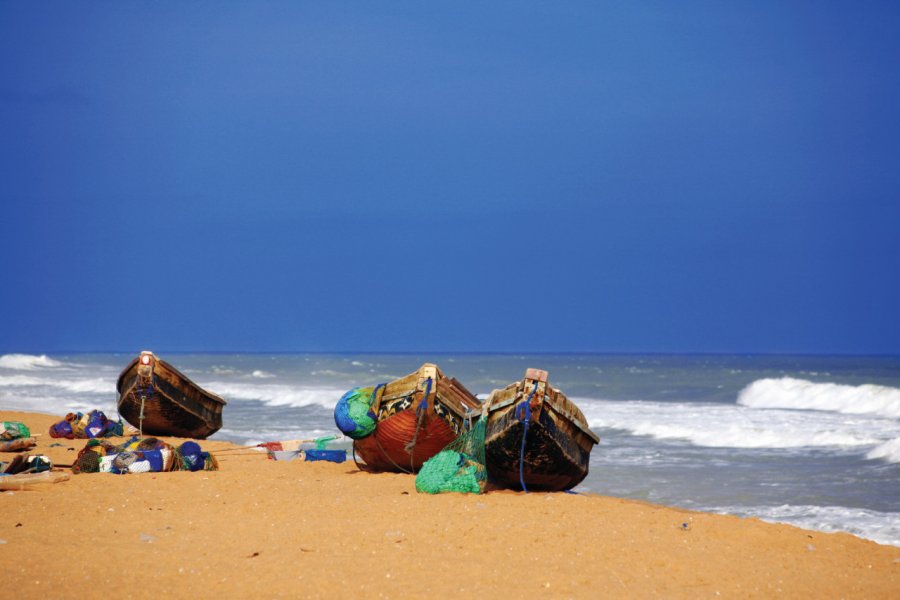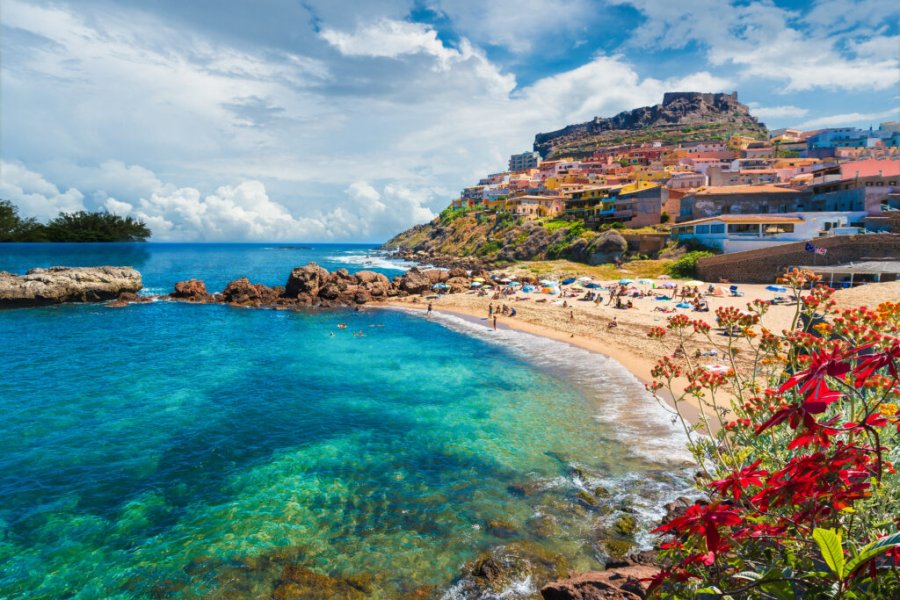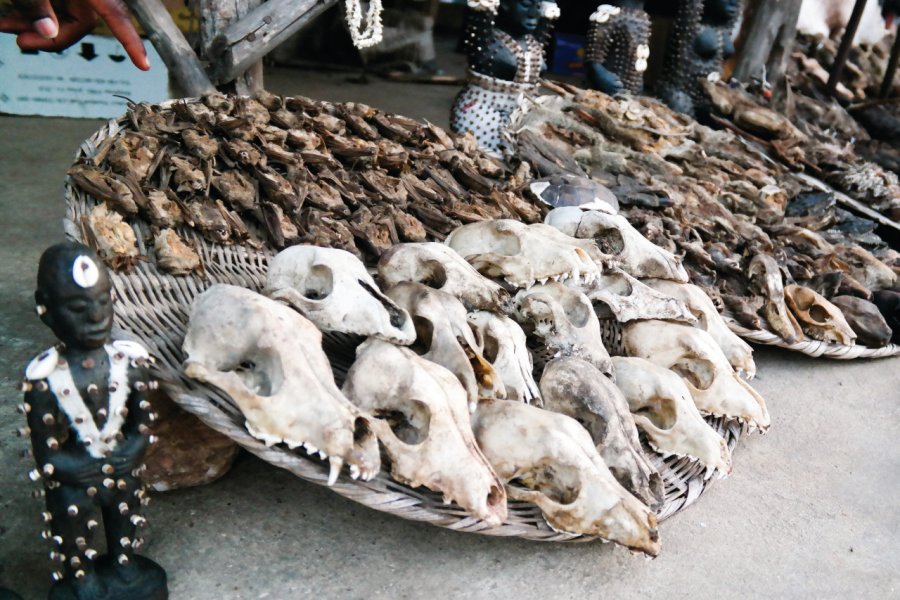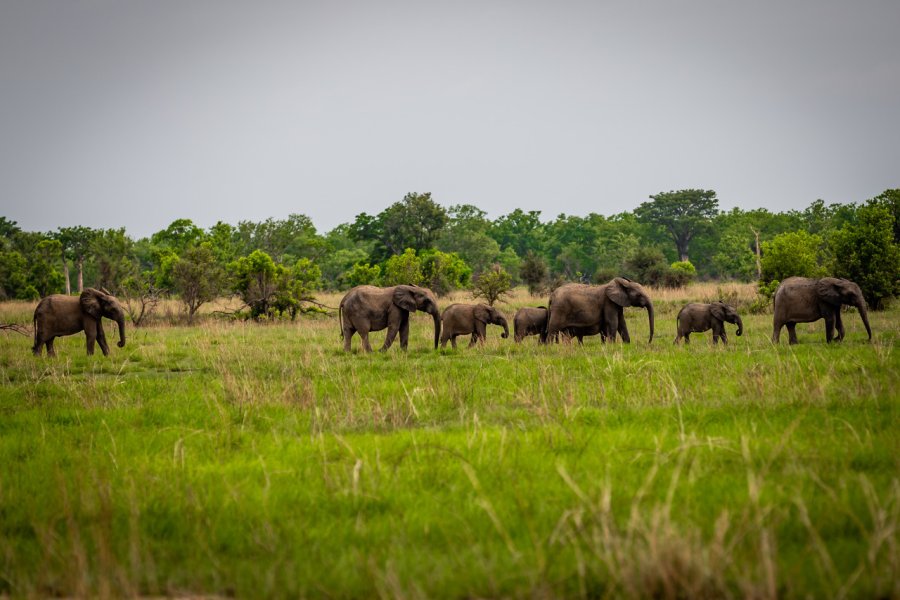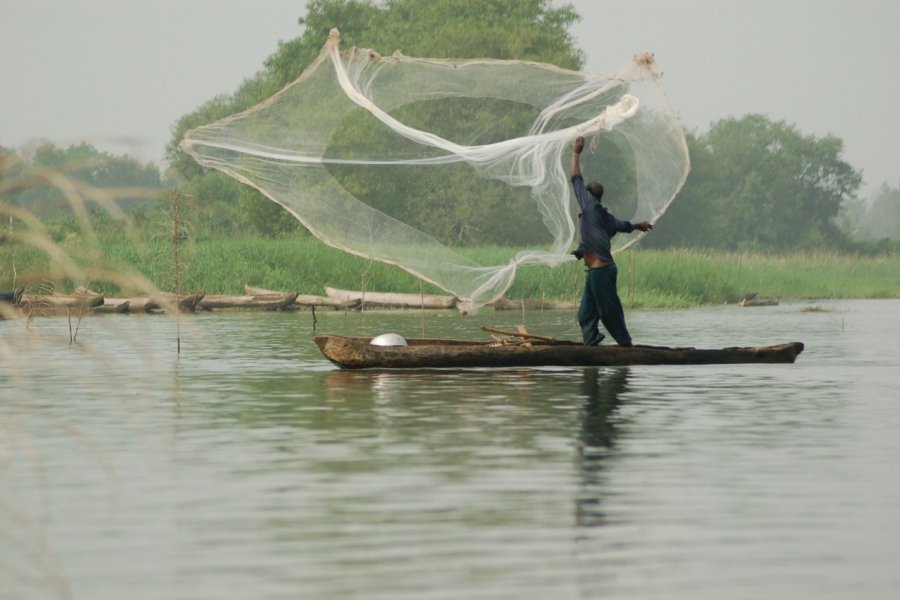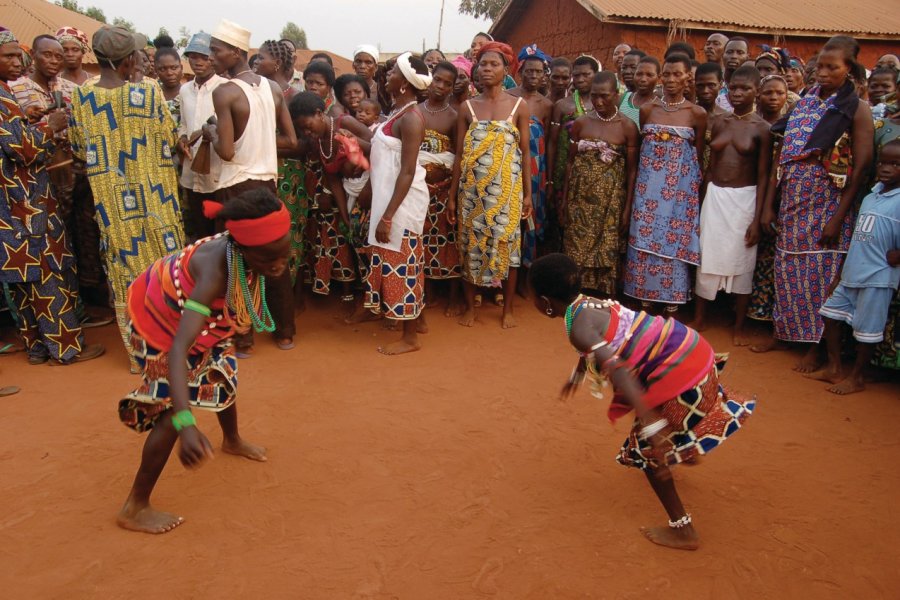Travel guide Benin
Nestled on the west coast of Africa, Benin is a mosaic of intertwining histories, cultures and landscapes. This small country abounds in an unsuspected wealth of heritage and superb places to visit. The Benin travel guide takes you on a journey where the royal palaces ofAbomey overlook the sacred waters of Ganvié, the Venice of Africa. Find accommodation quickly and sample culinary delights in the country's finest restaurants.
Ouidah, Mecca of Vodoun, vibrates to the rhythm of the drums during festivals and invites reflection at the Slave Memorial, a reminder of the painful Atlantic slave trade. The Pendjari National Park, meanwhile, is an ode to wilderness, where lions, elephants and cheetahs proudly roam. Beninese cuisine is a symphony of flavors: from akpan to amoun to peanut sauce, every bite is a discovery.
Visit Cotonou, the economic capital, where you'll discover a captivating mix of contemporary architecture and bustling markets. History buffs will be seduced by the royal palaces of Abomey, witnesses to the powerful kingdom of Dahomey. Let yourself be tempted by an escape to Porto-Novo, the cultural capital, or let yourself be bewitched by the mystical songs of Natitingou.
Benin is also the cradle of voodoo, with the Ouidah region immersing you in the mysteries of this ancestral religion. Let your soul wander through the colorful markets of Dantokpa or plunge into the rich history of Ouidah's Portuguese fort.
It's not just a journey, it's an immersion in a world where past, present and future are intertwined. Benin awaits you, with open arms and a beating heart.
What to see, what to do Benin?
-
Book an activity
-
Customized travel
- The most beautiful cities Benin
When to go Benin ?
When is the best time to visit Benin and take full advantage of its treasures? This West African country reveals its many facets depending on the season:
The best time to visit Benin is from November to February. During these months, the weather is milder, so you can enjoy visits to the historic towns of Abomey and Ouidah, or explore the wildlife of the Pendjari National Park.
From June to October, Benin experiences its peak tourist season and the rainy season. This is also the period when traditional festivals, such as the famous International Voodoo Festival in Ouidah, are in full swing. Bear in mind, however, that there's plenty of rain to go around.
March to July is the rainy season in the south, but don't forget it! Nature is in full bloom, the landscapes are lush, and it's a great time for photography. However, some travel may be more complicated due to the rains.
If you travel to Benin in January, this not-to-be-missed event plunges you into the heart of voodoo rituals, in a whirlwind of dance and color. It's the incredible Festival International de Porto-Novo, a fascinating immersion in the country's arts and traditions.
When should you travel to Benin if you're looking for the best rates? The low season, from April to October, although rainy, offers more affordable accommodation rates. For an authentic experience at a lower cost, this is an opportune time to discover Benin. The months in between, like September and October, offer a compromise between weather and crowds. They're ideal for enjoying Benin without the crowds of the peak months. Each time of year reveals a different face of Benin. Immerse yourself in the cultural effervescence or lose yourself in the tranquility of the natural landscapes, Benin welcomes you with open arms, whatever the time of year.
Suggested addresses Benin
Travel Benin
-
Find a hotel
-
Car Rental
-
International e-SIM package
-
Find a local agency
Le Bénin s’étend du nord au sud sur quelque 800 km, ce qui permet de découvrir, même durant un séjour relativement court, différents aspects du pays, de sa culture et de ses paysages. Cependant, les trajets sont relativement longs et il faudra compter une dizaine d'heures pour monter dans le Nord du pays depuis Cotonou. Pour avoir un bon aperçu du Sud du pays, explorer le littoral et découvrir la capitale administrative Porto-Novo et les cités historiques de Ouidah et d'Abomey, il faudra compter au moins une semaine, idéalement une dizaine de jours. Pour envisager de remonter dans le Nord-Est et ajouter à ce programme la découverte des tata somba et s'offrir un safari dans le parc de la Pendjari, il faudra compter un minimum de 2 semaines. A noter, pour les excursions dans le parc ou sortir des « sentiers battus », un 4x4 s’avère nécessaire. Afin de vous donner un bon aperçu du pays, divers itinéraires vous sont proposés.
Find unique Stay Offers with our Partners
How to go Benin
How to go alone
Going alone in Benin is an adventure. This destination, still untouched by mass tourism, offers an authentic experience for intrepid travelers. To achieve this:
Learn about local traditions to respect Beninese culture;
Local guesthouses are an excellent option for meeting other travelers;
Use local transport, such as zémidjans (motorcycle cabs);
Although Benin is generally safe, remain vigilant, especially at night.
And learn some basic Fon or Yoruba phrases to get the ball rolling!
How to go on a tour
Organized travel to Benin is a comfortable and practical way to discover this enchanting country. Tour operators offer itineraries that cover major attractions such as national parks. They include accommodation and transport. An experienced local guide will share Benin's ancestral culture with you.
Our advice: before committing yourself, compare itineraries and read the reviews of previous travelers to choose the Benin tour package that's right for you.
How to get around
In Benin, getting around is an experience!
Zémidjans, the ubiquitous motorcycle cabs, are a fast and economical way to get around town;
For longer distances, bush cabs or minibuses, though often overcrowded, link the main towns;
Pirogues, for their part, offer peaceful crossings in watery areas such as Ganvié ;
For greater comfort, rent a car with driver.
And don't forget to haggle over prices before you set off. Enjoy your trip!
Featured articles Benin
Discover Benin
Benin is a small country that seems to have everything Africa has to offer. First and foremost, it's the cradle of vodoun (voodoo), the traditional religion that crossed the Atlantic with the slaves. Benin is also home to Ouidah, one of the African ports that saw the most men leave in chains for the New World, and also boasts some fine examples of Afro-Brazilian architecture... The former Kingdom of Dahomey has a rich history, which you'll want to discover by following the trails that cut through a wide variety of natural landscapes, from the Atlantic coast to the Sahel, via the Atacora mountain range. It's also home to the Parc de la Pendjari, a UNESCO-listed sanctuary for African wildlife (still closed for security reasons in summer 2024), Lake Ahémé and its fishermen, and immense sandy beaches for a refreshing siesta after a grilled fish.
Pictures and images Benin
The 12 keywords Benin
1. Peanut

Rich in calcium, protein and vitamin E, peanuts are a staple of African cuisine. Peanuts are mainly used to accompany meats and fish, as well as spicy sauces. And peanuts are enjoyed every evening as an aperitif with a Béninoise, the local beer.
2. Happy arrival!

It's the welcome greeting! And you'll hear it as soon as you step into the customs hut at the airport. During the journey, these words resound as soon as you arrive in a village, but also as soon as you walk through the door of a hotel, a restaurant, a store... Words, always said with a smile, that testify to Benin's sense of hospitality.
3. Calabash
A central element of Beninese craftsmanship, gourds of all shapes and sizes can be found in every region of the country. Once dried and emptied, these gourds are reinvented to serve as spoons, containers, musical instruments... One thing's for sure, there'll be one in your suitcase when you board your plane home!
4. Lagoon
The Beninese coastline is bordered by several lagoons formed by the delta of the Ouémé River (which flows into the ocean in neighboring Nigeria) and the Mono River, which comes from the west. The Cotonou lagoon is the largest in the country. It was created artificially when the French dug a channel linking Lake Nokoué to the Atlantic Ocean.
5. Laterite

The soils of Bas-Benin are covered with a characteristic red crust. Resulting from a chemical process, occurring exclusively in tropical and equatorial zones, these soils were formed following a chemical decomposition of rocks, due to strong heat. Most of the runways are therefore covered with laterite.
6. Paste
The dough, a kind of compact and sticky polenta, accompanies almost every meal. Most often, it is made with corn flour in the South and yam flour in the North... It is steamed and eaten with the fingers, dipped in a sauce often spicy (tomato, peanut or vegetable), with meat, fish or cheese.
7. Tanti
Tanti is a term of endearment, which is also a sign of respect, and is used to address a woman. For tourists, it is appropriate to use this term to address a shopkeeper in a friendly manner. Obviously, to try to soften her up, as the "difficult" negotiation of a price for a calabash or a meter of wax begins..
8. Tchouk
Tchouk, short for tchoukoumbé, is a beer made (usually by hand) from sorghum. It tastes like cider and is well worth trying. Tchouk is widely consumed, especially in the north of the country. Drink it as the sun goes down, in moderation, of course... Cheers!
9. Vodun
Traditional religion par excellence, vodoun finds its roots in Benin and its main cradle around Abomey, but also Ouidah or Porto-Novo. Even Beninese who claim not to believe in it respect it. Following the slave trade, this religion crossed the Atlantic and became the source of many Afro-American cults.
10. Vons
Acronym meaning "north-south road" and by extension, any unpaved secondary road. The vons is a road that is generally poorly maintained and difficult to drive on during the rainy season. But the zem (motorcycle cabs) are not afraid to go there and slalom between the potholes. Guaranteed sensations!
11. Yovo
The visitor understands this very quickly on arriving in the country... Yovo is... "White". A word that now applies to Western tourists in general. "Yovo, Yovo, good evening! How are you? Thank you!" is a refrain that children repeat systematically and frantically as soon as you arrive in a village.
12. Zem

Short for zemidjan, which means "take me away quickly" in Fon. These are motorcycle cabs that circulate in all cities. Not only are they very cheap, but they also have the advantage of ignoring the traffic jams in Cotonou. The drivers are recognizable by the color of their shirts (yellow in Cotonou).
You are from here, if...
You love the gentle way of life in your village, where you go regularly to get away from the hustle and bustle of Cotonou for a while.
You're always patient, whether in the administration, in maquis (restaurants), at customs controls..
You say good evening to your family and friends at midday... That's right, half the day's gone, and night falls in six hours!
You always have a few coins to pay for a zem or buy yourself a little juice on the side of the road.
You haggle before buying a craft or a zem.
You never pay with your left hand - it's very, very improper!
You alwaysdrink a little Beninoise, the local beer, as soon as the sun goes down, while nibbling on a few peanuts.
You always show respect for an elder, whom you may even call "old man" as a sign of consideration.
You neverphotograph people without their consent.

